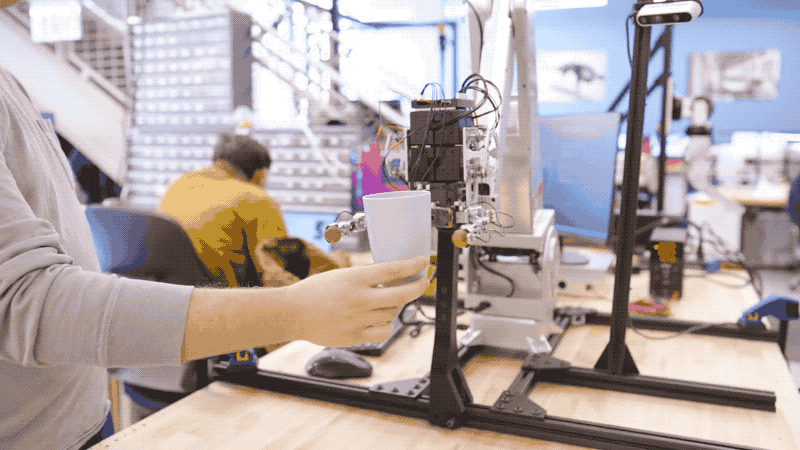A refrain I hear from a lot of startups is that there’s “no need to rethink the gripper.” It’s something I appreciate from an economic standpoint. It’s expensive, resource intensive and both your time and money are probably best spent elsewhere when there are already so many effectors on the market.
I also recently made an analogy to a claw machine during an interview — and got some pushback. I understand a bit better now why that’s the case — at least in part. Discussing its new approach to robotic gripping, MIT invokes the perennial arcade favorite, noting, “When manipulating an arcade claw, a player can plan all she wants. But once she presses the joystick button, it’s a game of wait-and-see. If the claw misses its target, she’ll have to start from scratch for another chance at a prize.”

Image Credits: MIT
If you think about that for a moment, you realize that you’re suddenly faced with something that comes up over and over again in this field of study: That’s not how humans approach the job — and there’s a reason for that. If you’re say, grabbing an object with a strange or unexpected weight distribution, you generally don’t need to withdraw your hand and try again. You adjust.
The team describes a system that adjusts to an object in real time, using reflexes and feedback. Says MIT:
If the gripper fails to grab hold of the object, rather than back out and start again as most grippers do, the team wrote an algorithm that instructs the robot to quickly act out any of three grasp maneuvers, which they call “reflexes,” in response to real-time measurements at the fingertips. The three reflexes kick in within the last centimeter of the robot approaching an object and enable the fingers to grab, pinch, or drag an object until it has a better hold.
Interestingly, the project builds on actuators developed for the school’s mini cheetah robot, which were designed to help it react to uneven terrain on the fly. The new system is built around an arm with two multi-joint fingers. There’s a camera on the base and sensors on the tips that record feedback. The system uses that data to adjust accordingly.
Currently the team is using the gripper to clean up around the lab. Says MIT:
They set a variety of household objects on a shelf, including a bowl, a cup, a can, an apple, and a bag of coffee grounds. They showed that the robot was able to quickly adapt its grasp to each object’s particular shape and, in the case of the coffee grounds, squishiness. Out of 117 attempts, the gripper quickly and successfully picked and placed objects more than 90 percent of the time, without having to back out and start over after a failed grasp.
A claw machine does not a robotic gripper make by Brian Heater originally published on TechCrunch
from TechCrunch https://ift.tt/4591eGj

Comments
Post a Comment